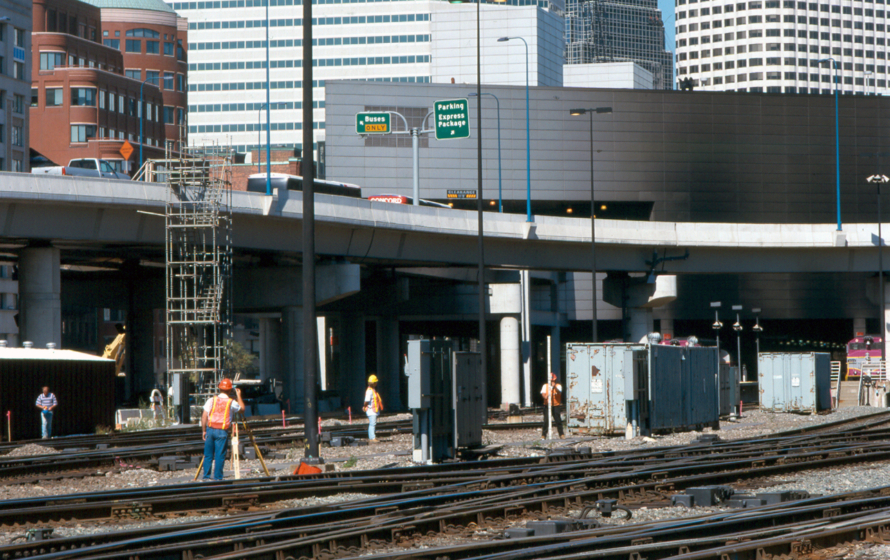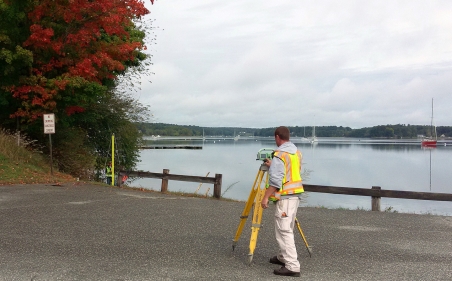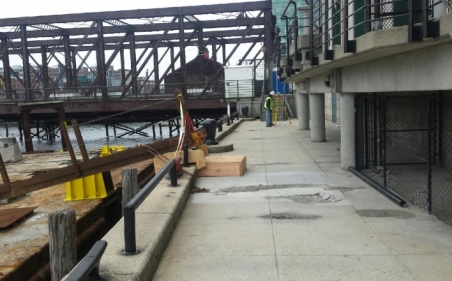The construction of the Interstate I-90 interchange for the Central Artery Tunnel (CA/T) involved tunneling, pipe-jacking and freezing and thawing of the ground under or near seven of the Massachusetts Bay Transportation Authority (MBTA) and Amtrak’s tracks leading to Boston’s South Station.
This $14.6 billion project, known as the ‘Big Dig,’ rerouted the once above ground Central Artery (Interstate 93) into a 3.5-mile tunnel and included the construction of the Ted Williams Tunnel (extending Interstate I-90 to Logan International Airport). The tunnel’s proximity to the tracks necessitated observation due to the potential for track movement and subsequent disruption to MBTA and Amtrak operations. Bryant Associates performed the critical job of collecting and reporting data from nearly 2,000 monitoring points.
Deformation Monitoring Points (DMPs) were established throughout the contract area to monitor static loading and dynamic loading as trains pass over the rails. Bryant monitored up to 800 points on a regular basis. The CA/T established a database of all monitoring points and created a program called RAILMON, which allowed track engineers to log onto the CA/T intranet website and monitor vertical movement on the track. Using a Digital Level and Data Collector, Bryant collected elevation points and then immediately uploaded them into the database. Up to 800 elevation points were collected within an eight-hour period. The necessity and frequency of monitoring decreased over time, from twice a day to monthly monitoring. Once the data was collected, it was promptly relayed to track engineers for analysis. Since beginning work on this contract in 1992, Bryant established stringent quality control measures for this project. It was imperative that monitoring be accurate and timely since a critical movement could affect track alignment and a false alarm could shut down a track carrying thousands of commuters.




